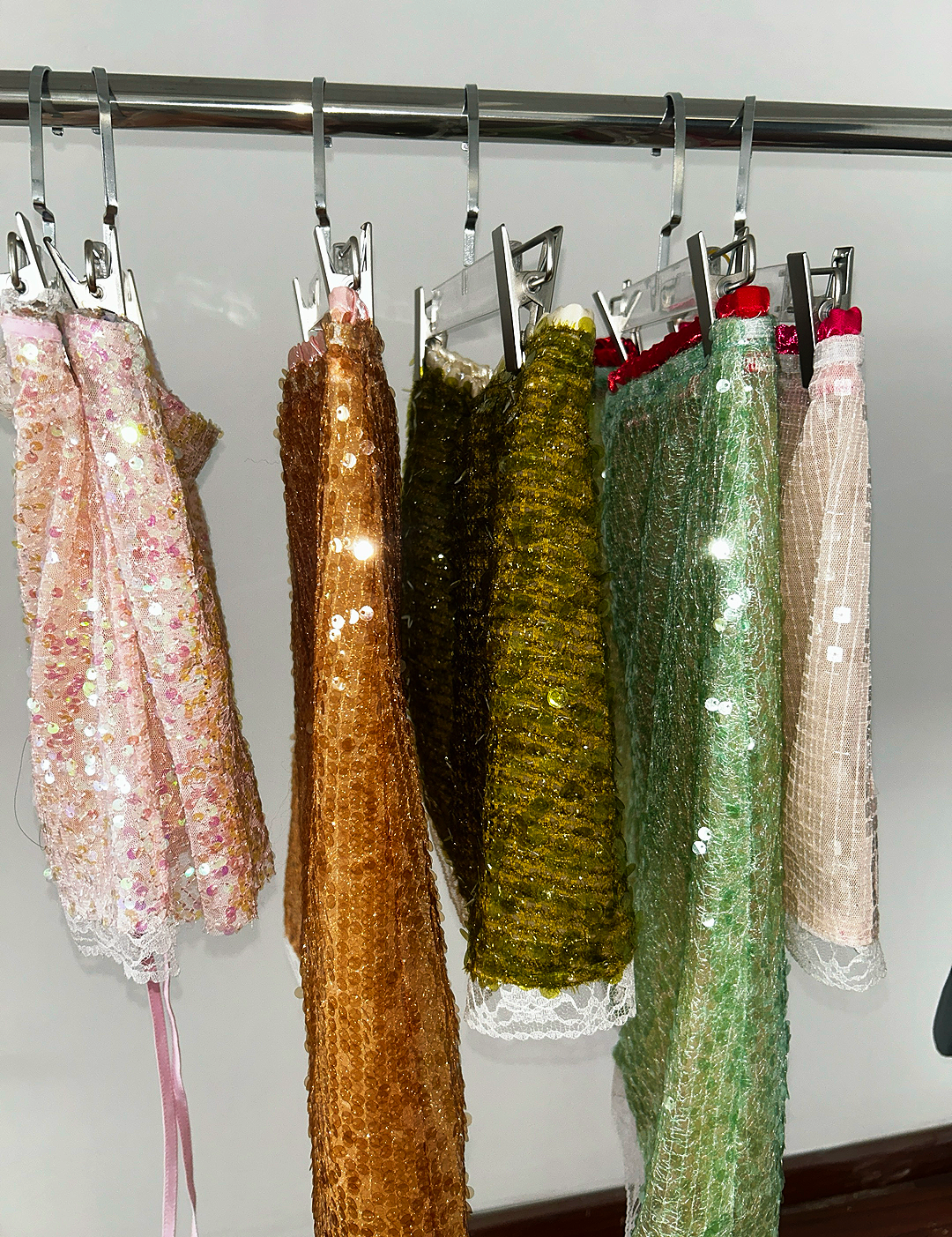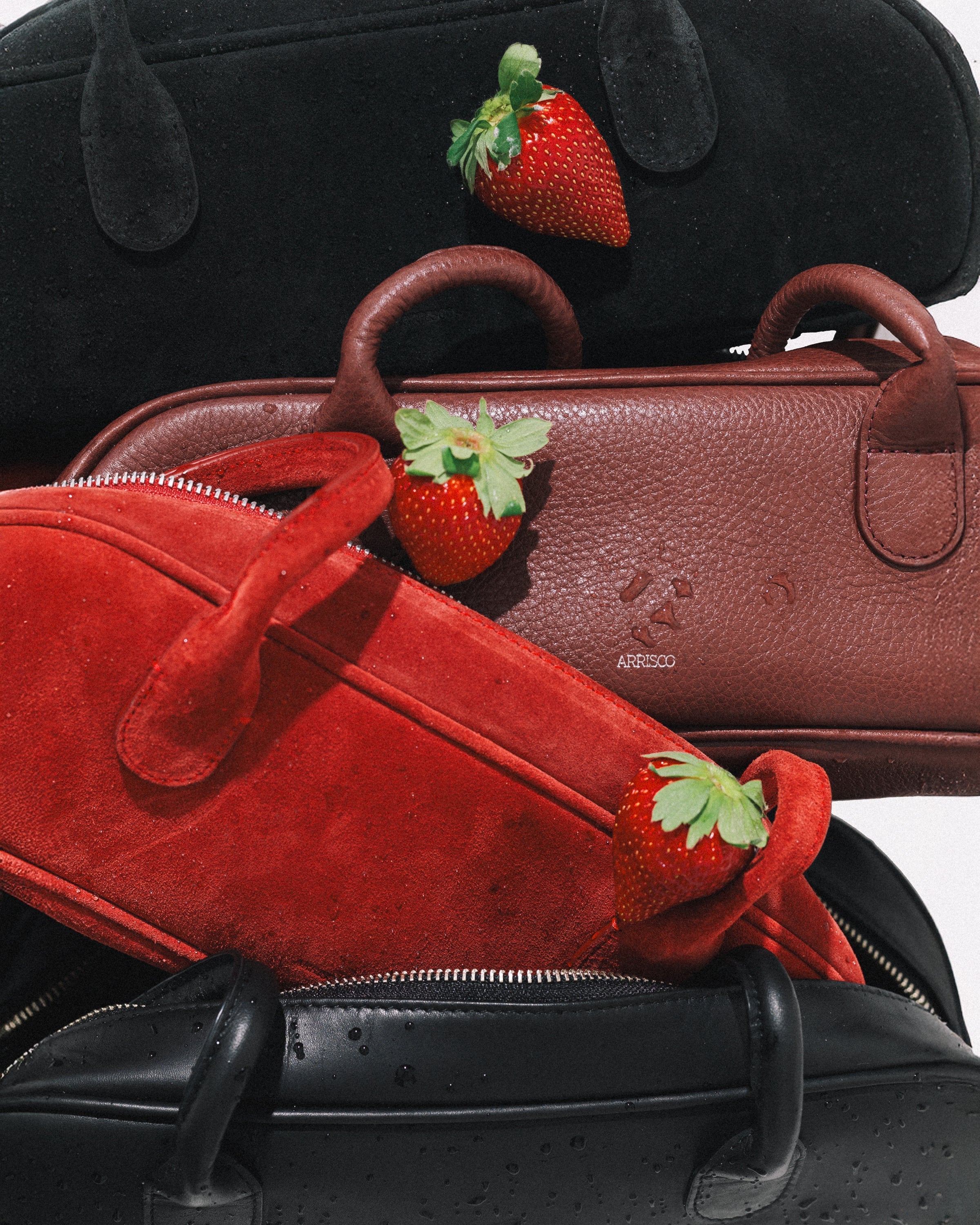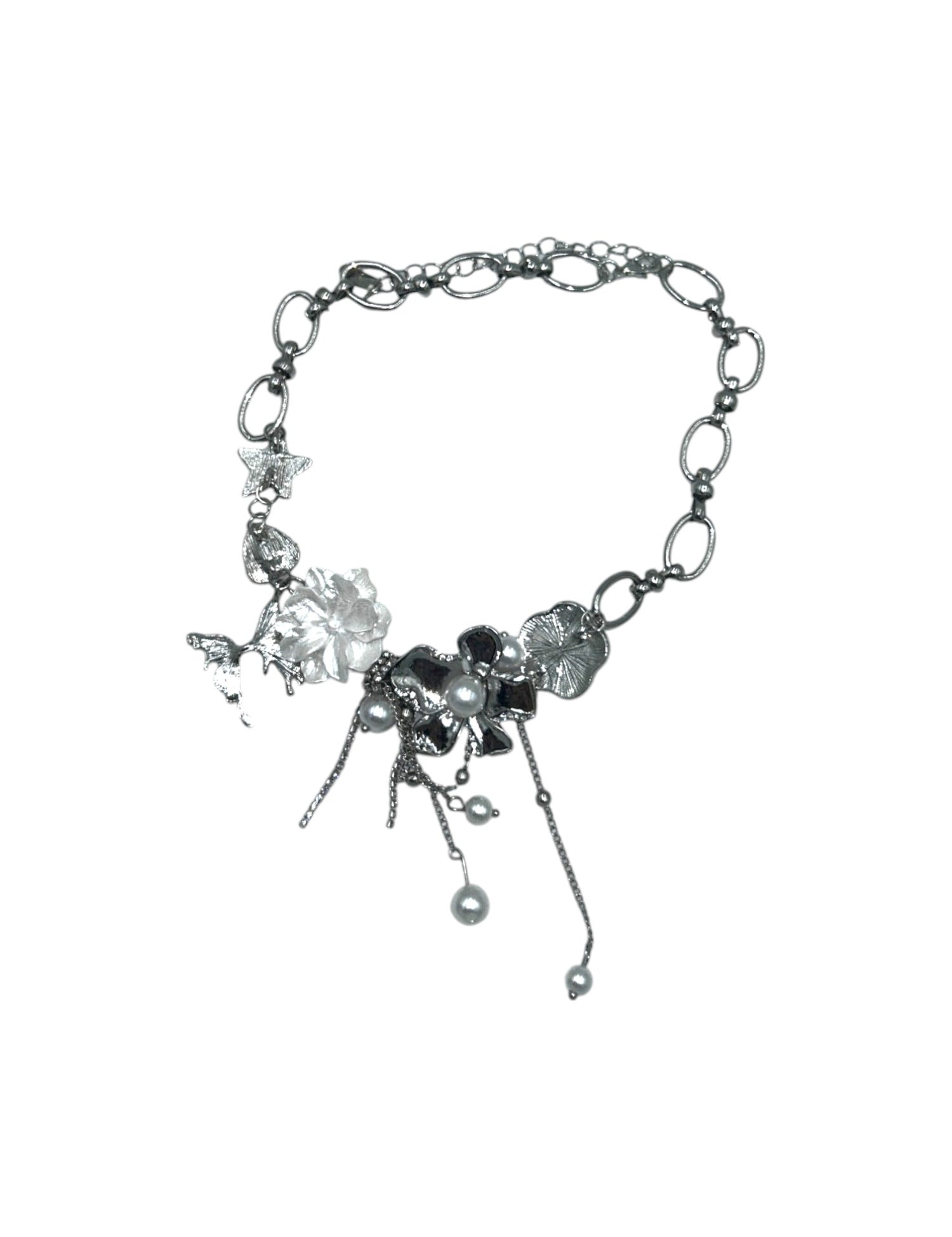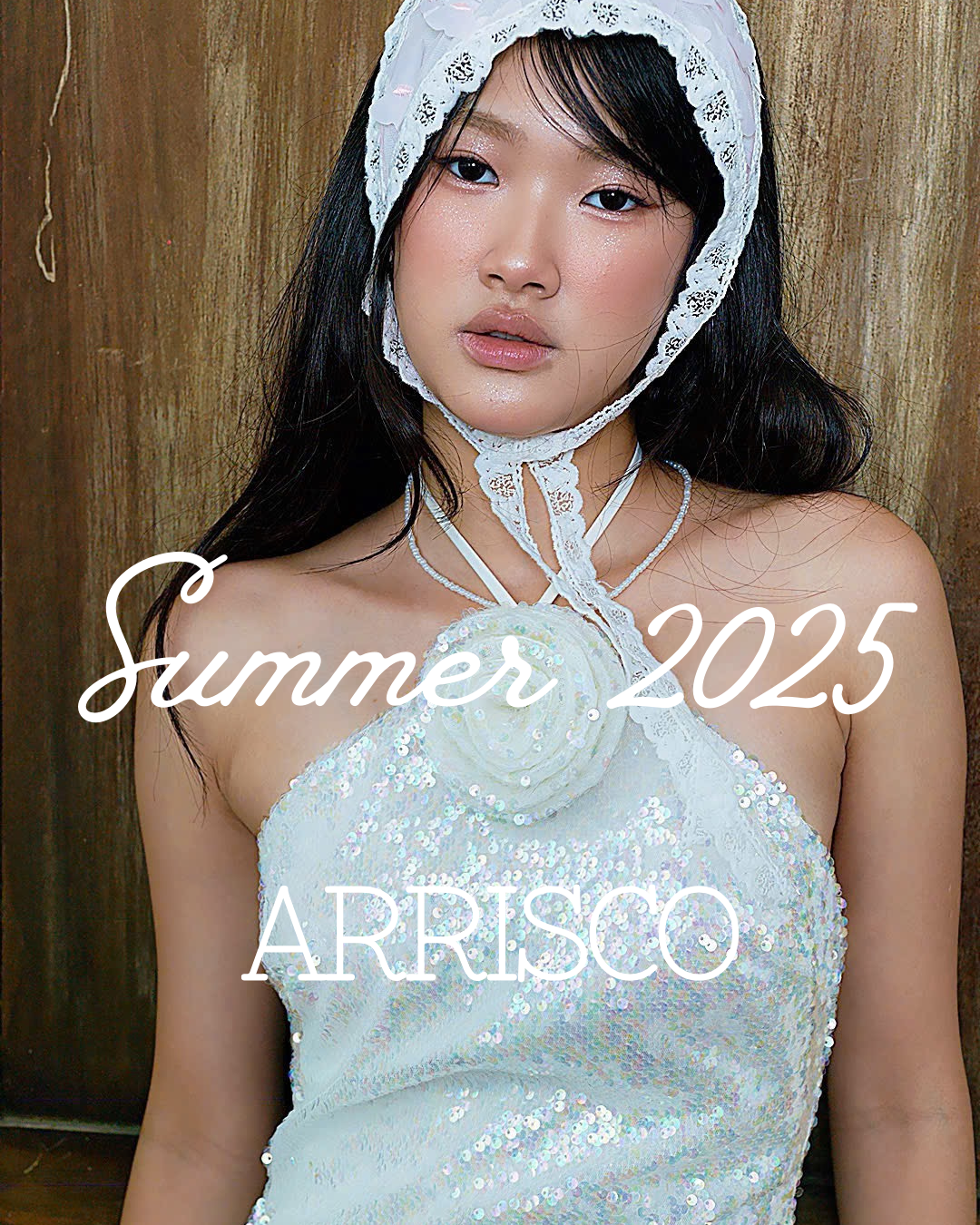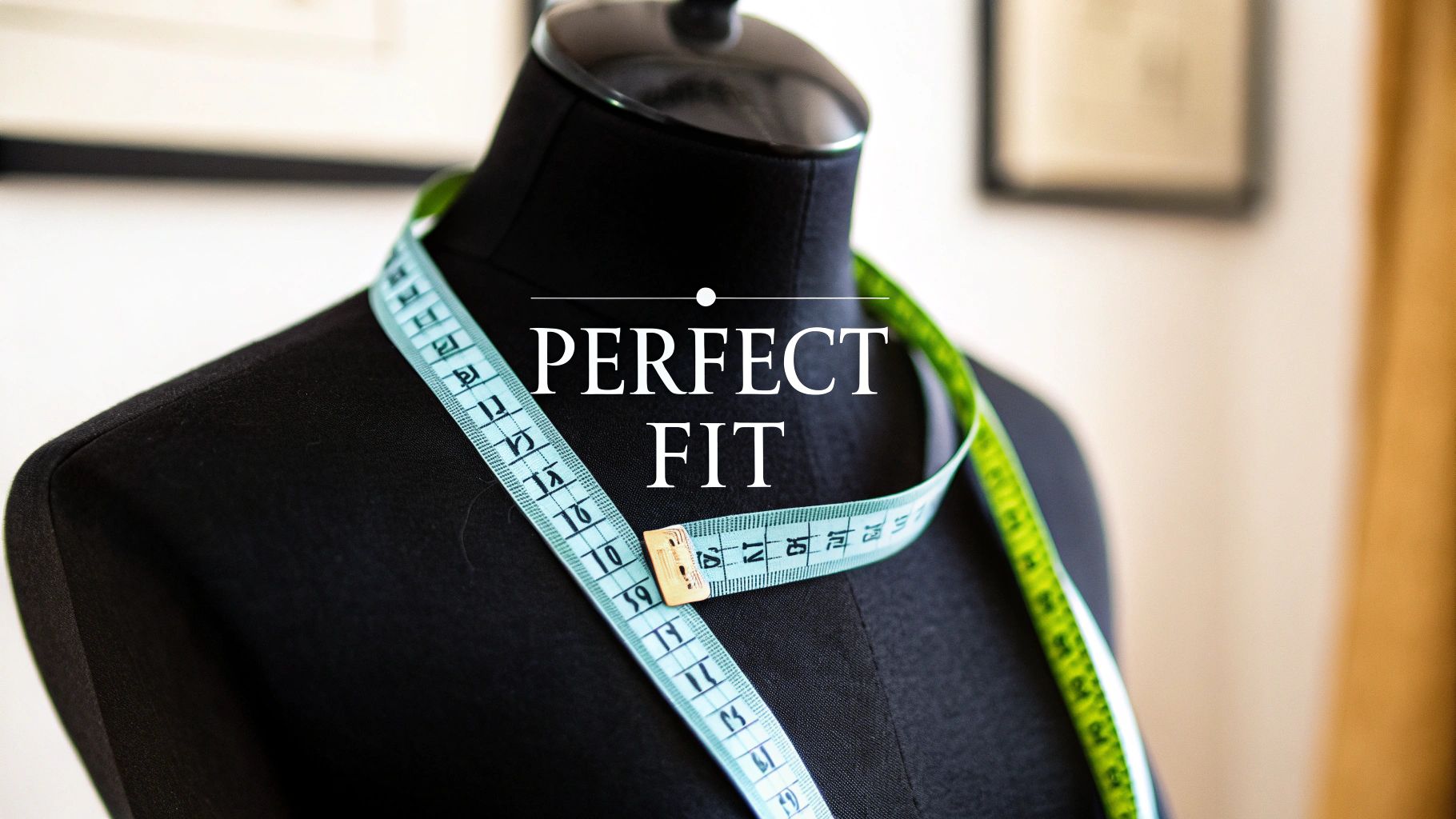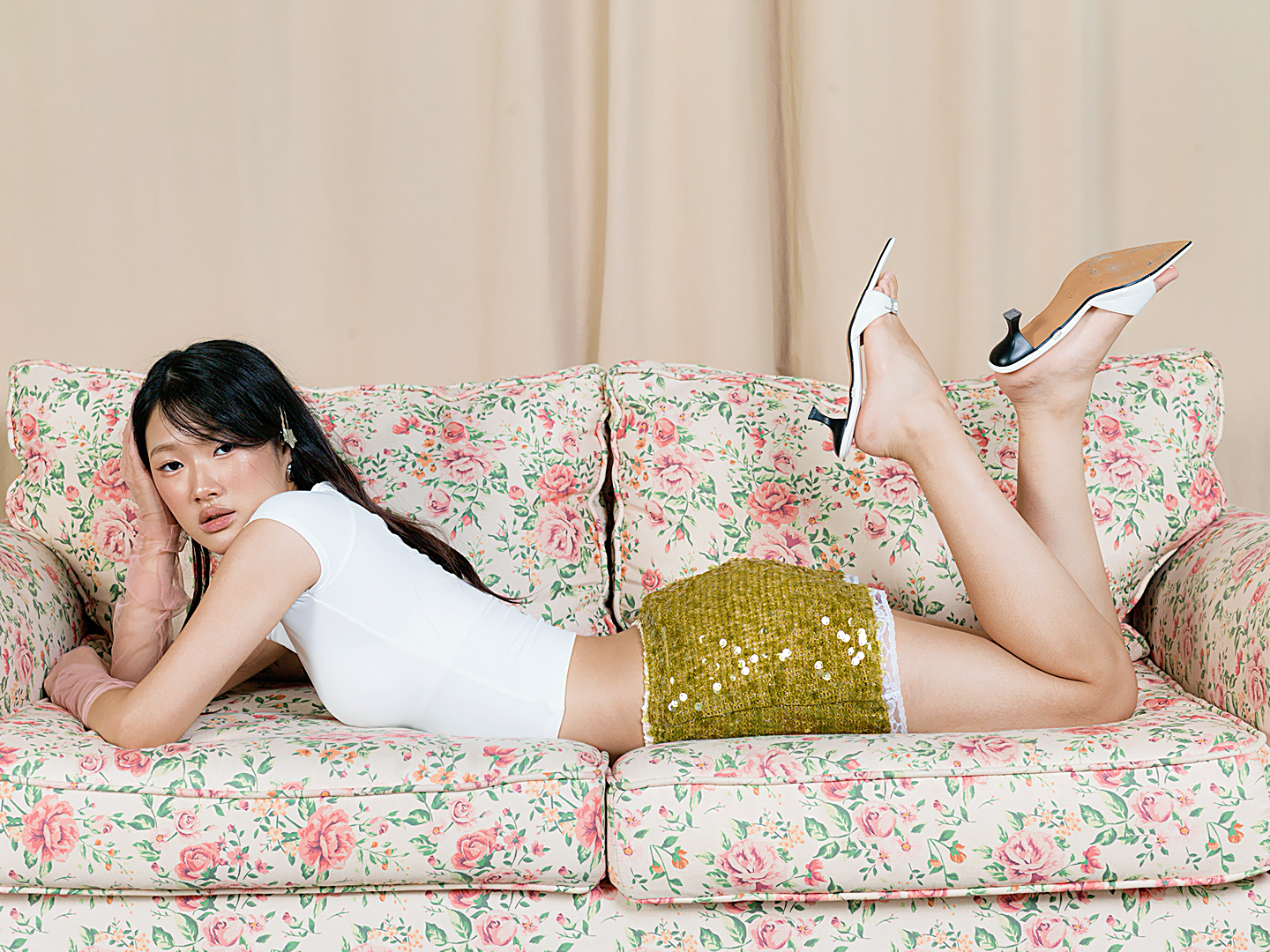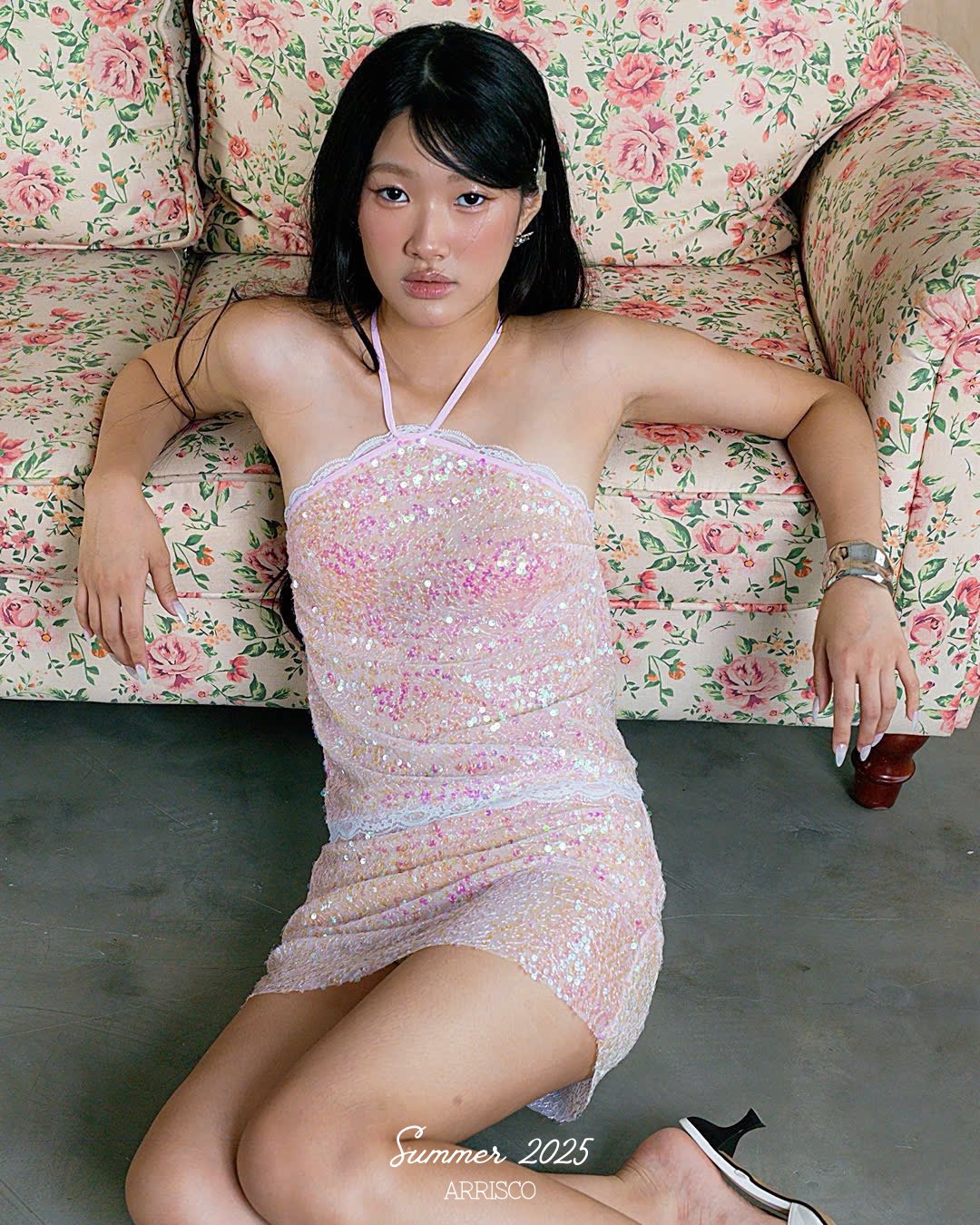Let's get this straight: to figure out your bra size, you really only need two measurements—your underbust (for the band) and your bust (for the cup). The magic formula is simply Bust Measurement - Underbust Measurement = Cup Size Difference. This number, along with your band size, is your golden ticket to finding a bra that actually feels good.
Why Your Bra Size Is Probably Wrong

If finding a comfortable bra feels like a mythical quest, you're in good company. We’ve all been there—straps digging into our shoulders, a band that creeps up our back, or cups that gape open or spill over. Sound familiar? These are the classic signs of a bad fit, and the culprit is almost always an outdated, flawed sizing method we were all taught.
Many of us learned the old “add four inches” rule: measure under your bust, then add four or five inches to find your band size. This is, without a doubt, the worst advice in the lingerie world. It’s a holdover from decades ago when bras had zero stretch, and it’s a guaranteed recipe for a terrible fit. It’s time to toss that old rule out and start fresh with a method that works for real bodies today.
The Problem with Traditional Sizing
So, where did this crazy "add four inches" rule even come from? It’s a ghost from bra-fitting past, a relic from a time before modern fabrics like Lycra existed. Bras used to be made from rigid materials, so that extra wiggle room was necessary.
Sticking with that old method today means you'll always end up with a band that's way too big. And a loose band is the root of almost all bra-fitting evil.
Your bra's band is supposed to do 80% of the heavy lifting. When it’s too loose, your straps have to pick up the slack, which leads to shoulder pain, bad posture, and a bra that just gives up.
A New Path to Comfort
When you hear that an estimated 80% of women wear the wrong bra size globally, it's easy to see why. The system is broken, not you! It's a widespread issue that has left millions of us feeling like we're the problem. If you want to dive deeper into this, you can learn why so many bra size calculations are inaccurate and get the full backstory.
But here’s the good news: you can absolutely take back control. By ditching the old rules and learning how to measure for your actual body, you can finally find the support and comfort you deserve. This guide will walk you through the real steps to get there, so you can say goodbye to frustrating fitting rooms for good.
How to Measure Your Bra Size at Home
Alright, let's get you measured! Finding your true bra size is one of the most empowering things you can do for your wardrobe and your comfort. It's surprisingly easy, and all you need is a soft measuring tape and a couple of minutes to yourself.
We're going to find two key numbers: your underbust (which gives you your band size) and your fullest bust measurement (which helps find your cup size). Forget all the confusing old rules you've heard. This is about listening to your body and getting the real data.
Ready to find your perfect fit? Let's dive in.
Finding Your Underbust Measurement
First things first, we need to get your band size right. This is the absolute foundation of a supportive bra!
Take your soft measuring tape and wrap it snugly around your ribcage, right where your bra band would normally sit—directly under your breast tissue. It’s super important to make sure the tape is level all the way around your body. A quick check in the mirror can help you see if it's parallel to the floor and not dipping down in the back.
Pull it firm, but not so tight that it feels like a corset. Exhale, let the air out, and then write that number down. This is the single most important measurement for getting a bra that actually stays put and does its job.
Measuring the Fullest Part of Your Bust
Now for the second piece of the puzzle: the bust measurement.
Stand up straight, relax your shoulders, and wrap the measuring tape around the fullest part of your bust. For most of us, this is right across the nipple line.
This time, you want the tape to be comfortably loose—don't squish or compress your breasts at all. Again, peek in the mirror to make sure it’s level across your back. Once you've got it, jot that number down, too. That's it! You now have the two measurements you need to unlock your real size.
This image shows you exactly how to get that tape measure in the right spot for an accurate bust measurement.

Keeping the tape measure perfectly parallel to the floor is the secret to capturing your true volume and getting the cup size calculation just right.
Pro Tip: For the most accurate reading, especially if you have softer breast tissue, I always recommend measuring twice. Take one measurement standing straight up, then another while leaning forward at a 90-degree angle (like you're touching your toes). If the numbers are pretty different, just use the average of the two.
This little trick accounts for how your breast tissue is distributed and gives a much more realistic picture of your volume. It's an extra step that can make a world of difference.
It’s wild, but studies have shown that between 80% and 85% of women are walking around in the wrong bra size. If you're curious about why sizing can be so tricky, you can explore the evolution of bra sizing on Wikipedia to get the historical scoop.
And hey, getting comfortable with taking your measurements is a skill that helps with all your clothes, not just bras! For a great all-around tutorial, check out this fantastic guide on how to take body measurements for clothes.
At the end of the day, a bra that fits perfectly is the foundation for any killer outfit. Once you've nailed your size, you can build a wardrobe that makes you feel incredible from the inside out. For some style inspiration, take a look at our guide to the biggest 2025 spring fashion trends and see how the right foundation can elevate every look.
Calculating Your Cup Size
You’ve got your two key numbers—fantastic! Now for the fun part: turning those measurements into your actual starting bra size. This is where the magic happens, and trust me, it's way simpler than you might think. No complicated algebra here, just one quick subtraction.
Let’s get one thing straight first. A cup size, like a "D cup," isn't a fixed volume. A 32D is completely different from a 40D! The letter is all about the difference between your bust and underbust measurements. That's the secret.

The Simple Cup Size Formula
Ready for the big reveal? Here’s the formula I’ve used for years:
Bust Measurement - Underbust Measurement = Your Cup Difference
This single number is your key to unlocking the right cup letter. Every inch of difference corresponds to a letter in the alphabet. A one-inch difference is an A cup, a two-inch difference is a B cup, and so on down the line. It's a beautifully simple system that removes all the guesswork.
To make it even easier, here’s a quick chart to translate that difference into your cup size.
Cup Size Calculation Chart
Find the difference between your bust and underbust measurements in the first column to determine your correct cup size letter in the second column.
| Bust - Underbust Difference (Inches) | Your Cup Size |
|---|---|
| 1 inch | A |
| 2 inches | B |
| 3 inches | C |
| 4 inches | D |
| 5 inches | DD or E |
| 6 inches | DDD or F |
This chart is your new best friend for figuring out that crucial cup letter.
Let's Walk Through a Real-World Example
Okay, let's make this crystal clear. Say someone measures their underbust at 30 inches and their bust at 34 inches.
- First, we find the difference: 34" (bust) - 30" (underbust) = 4 inches.
- Next, we check our trusty chart. A 4-inch difference points us straight to a D cup.
- Finally, we put it all together. Their starting bra size is 30D.
See? It’s that easy! You now have a reliable, data-backed starting point for your bra shopping journey. This is the size you'll begin with when trying on any new style.
It's also fascinating to see how much bra sizes vary across the globe. For instance, while a US study found the most common size among participants was 34B, things look very different in Europe. A survey there showed that 57% of UK participants wore a D cup or larger! Meanwhile, in Italy, 68% wore a B cup. It just goes to show how much body shapes and sizing trends can differ.
Key Takeaway: Think of this calculated size as your starting line, not the finish line. Every brand and style fits a little differently, but with this knowledge, you're perfectly equipped to find what truly works for you.
Once you've found your size, you can start building a wardrobe that makes you feel incredible from the inside out. A great-fitting bra is the foundation for any killer outfit, much like a perfect accessory can tie a whole look together. For a little style inspiration, check out our take on fall’s essential brown suede bag trend.
Using Sister Sizes to Perfect Your Fit
So, you’ve done the measurements and figured out your starting size—that's a massive first step, and you should be proud! But what about those moments in the fitting room when a bra is so close to perfect? You know the feeling: the cups are spot-on, but the band is digging in a little too much. This is where a game-changing secret weapon comes into play: sister sizing!
Think of sister sizes as your key to unlocking a truly custom-feeling fit. It’s the brilliant idea that a bra cup's volume isn't tied to a single size. In fact, the same cup volume can exist across several different band and cup combos, which opens up a whole new world of options for finding your perfect match.
Understanding the Magic of Sister Sizing
Let’s break down the core concept. A 34C holds the exact same amount of breast tissue as a 32D and a 36B. These are what we call "sister sizes." This works because cup volume is always relative to the band size.
Honestly, this is where most of the confusion around bra sizing stems from. We're often taught that a D cup is just "big" and a B cup is "medium," but that's not the full picture. Cup letters are really just a ratio—the difference between your bust and underbust. This means a B cup on a small 32-inch band holds a totally different volume than a B cup on a larger 38-inch band. That's how a 32D and a 36B can end up with the same cup volume! To get a better sense of how these sizing quirks contribute to fit issues, you can discover more insights on common bra size myths.
The Simple Rule for Finding Your Sister Size
Ready to try it out? The rule is so simple it will change the way you shop for bras forever.
- Band too TIGHT, but cups are perfect? Go UP one band size and DOWN one cup size. (For example, a snug 32D becomes a more comfortable 34C).
- Band too LOOSE, but cups are perfect? Go DOWN one band size and UP one cup size. (For example, a loose 36C becomes a more supportive 34D).
This quick swap keeps the cup volume the same while giving you the band adjustment you really need. It’s the ultimate trick for fine-tuning your fit when a brand or style isn’t quite working in your go-to size.
Real-World Scenarios Where Sister Sizing Saves the Day
Let's put this into a real-life context. Imagine you’ve calculated your size as a 34B. You slip on a gorgeous new bra, and the cups fit like they were made for you—no gaping, no spillage. But that band? It feels uncomfortably tight, even on the very last hook.
Don't just hang it back on the rack! This is your moment to use sister sizing. Just ask for its sister size: go up in the band to a 36 and down in the cup to an A. That 36A is very likely to give you the comfortable band you crave with that same perfect cup fit.
Knowing this empowers you to confidently navigate sizing differences between brands and styles. After all, a perfect fit is the foundation of any amazing outfit, and exploring new looks should be fun, not frustrating. For a little creative inspiration, check out our piece on the vibrant world of Myeongdong street food fashion and style.
Let's Troubleshoot Your Bra Fit
So, you've done your measurements and calculated your size. Awesome! But sometimes, when you actually try on a bra, reality throws you a curveball. Don't get discouraged—this is totally normal. Different brands, styles, and even fabrics can fit completely differently.
Think of your calculated size as your perfect starting point, not the final answer. Now, let's become fit detectives and fine-tune things until your bra feels absolutely incredible.
What to Do if Your Cups Are Gaping
You know the look—that annoying gap between the top of the cup and your chest. It’s a super common issue, and the first thing to check is your straps. Are they too loose? Give them a little tightening and see if that solves it.
If the gap is still there, it's a sign that the cup is either too big or the style just isn't right for your unique breast shape.
- Try a Smaller Cup: Your first move should be to go down one cup size while keeping the band the same. For instance, if a 34D is giving you that gap, grab a 34C and see how that feels.
- Switch Up the Style: Sometimes it's not the size, it's the shape. If your breasts are less full on top, a classic full-coverage T-shirt bra might always have a little space. Try a demi-cup or a balconette style instead—they're designed with a lower cut that often works wonders for this shape.
Dealing with Spillage Over the Top or Sides
Ah, the dreaded "quad-boob." If your breasts are spilling out over the top or sides of the cups, that's a crystal-clear sign they're too small. Your breast tissue is literally looking for more room and isn't being properly contained.
This is hands-down one of the most frequent fit problems I see. The fix is almost always simple: you just need more volume in the cup to hold everything comfortably without squishing.
The solution here is refreshingly straightforward. You need to give your breasts the space they deserve!
The Fix: Simply go up one cup size. If you're spilling out of a 36C, your next stop should be a 36D. This will provide the coverage you need for a smooth, seamless look under your clothes.
If Your Band Rides Up Your Back
This is a big one! If your band is arching up your back, it's a major red flag that it's too loose. Your bra band is the workhorse—it provides 80% of the support. When it's riding up, it’s not doing its job, which forces your straps to take on all the weight, leading to sore shoulders and zero lift.
Thankfully, this is where your new superpower—sister sizing—comes to the rescue.
The Fix: You need to go down a band size and up a cup size to keep the same cup volume but get a much snugger, more supportive fit. So, if your 36B is hiking up, try its sister size: a 34C. This one little change can be a complete game-changer. Choosing a well-made bra that fits perfectly is also a huge part of the slow fashion vs. fast fashion mindset, where quality and fit are everything.
It's also fascinating to remember that our bodies are always changing. Did you know that in the UK, the average bust circumference grew by 6.3 cm over 50 years? These kinds of long-term shifts are exactly why it's so important to remeasure every so often. You can discover more insights about these measurement trends and see just how much bodies evolve over time.
Got More Bra Sizing Questions? Let's Dig In.
So, you've mastered the measuring tape and done the math, but a few nagging questions are still rattling around in your head. That’s totally normal! Finding the right bra can feel like a puzzle, so let's tackle some of the most common head-scratchers that pop up.
Think of this as your personal FAQ for getting that final boost of confidence before you shop.
How Often Should I Really Remeasure Myself?
Honestly, you should hop back in front of the mirror with that tape measure every 6 to 12 months. It sounds frequent, but our bodies are constantly evolving! Things like a new workout routine, hormonal shifts, or just life itself can cause changes.
The bra that felt custom-made last year might be staging a silent protest now. A quick annual check-in is the best way to make sure you’re always getting the support and comfort you deserve for the body you have today.
Why Is My Bra Size All Over the Place with Different Brands?
Ugh, this is the absolute worst, isn't it? You're a solid 34D in one brand, but in another, it feels totally off. You're not imagining it! Just like your favorite pair of jeans, there’s zero universal standard for bra sizing across the industry.
This wild inconsistency boils down to a few key things:
- Different Materials: A super stretchy lace is going to fit way differently than a rigid, supportive microfiber.
- Unique Designs: A deep plunge bra is cut and constructed completely differently than a full-coverage T-shirt bra.
- Brand-Specific Fit Models: Each company uses its own fit model (a real person!) to design and size its entire collection.
Think of your calculated bra size as your home base—it's the perfect place to start, but it's not the final destination. Be prepared to try on your size and its sister sizes to really nail the fit, especially with a new brand.
Does My Breast Shape Actually Change My Bra Size?
Here’s a fantastic question that gets into the real artistry of bra fitting. While your breast shape doesn’t technically change the numbers (34D is 34D), it dramatically influences which bra styles will look and feel amazing on you.
This is the secret sauce! Getting the numbers right gets you into the right store, but understanding your shape helps you pick the perfect outfit off the rack.
For example, if you have breasts with less volume on top, you might find that full-coverage cups always leave a little gap, no matter what size you try. A demi-cup or a beautiful balconette bra, however, would probably fit like it was made for you. Knowing if your shape is more round, teardrop, or slender is the key to picking styles that celebrate your unique silhouette. For more on how style and fit come together, just look at how fashion icons like Hailey Bieber curate their look.
Ready to put all this expert knowledge into practice? At Arrisco, we're obsessed with helping you find a fit that feels incredible. Use our virtual fit tools to explore gorgeous seasonal collections and discover pieces designed to flatter your unique shape and style. Find your perfect fit at Arrisco today!

